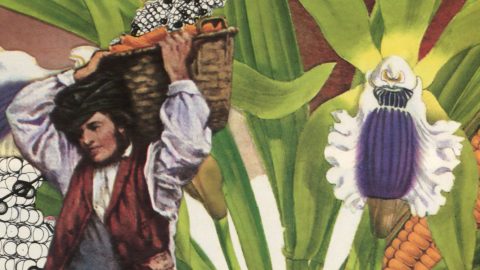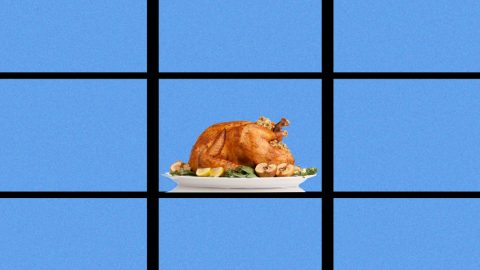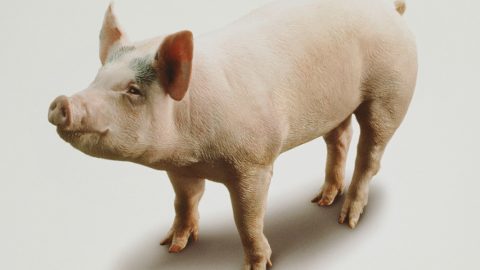
The obvious problem with the lab-leak theory, though, is that there remains no concrete evidence for it. Chan has no particular view about how exactly an accident might have happened—whether a student got sick in a bat cave, say, or secret research to infect mice with a novel virus went awry. After reading Chan’s posts, I noticed that many of her claims don’t even relate to direct evidence at all; more often, they revolve around its absence. She tends to point out things that Chinese researchers didn’t do or say, important facts they did not quickly reveal, the infected market animal they never found, or a database that’s no longer online. She’s plainly suggesting there is a cover-up—and, therefore, a plot to conceal the truth.
Pre-adapted
Last February, when leading scientists convened to analyze the virus genome, they ended up publishing two letters. One, in The Lancet, dismissed the lab-accident possibility outright as a “conspiracy theory” (its authors included a scientist who funded research at the Wuhan lab). The other was the “Proximal Origins” letter in Nature Medicine, coauthored by Kristian Andersen, an evolutionary biologist at the Scripps Research Institute in La Jolla, California. Andersen and his coauthors looked at the genome of the virus and marshaled arguments for why it was very likely a natural occurrence—backed by evidence that it was similar to others found in nature.
The 30,000 genetic letters in that genome remain the most widely studied clue to the virus’s origin. Coronaviruses frequently swap parts—a phenomenon called recombination. Andersen found that all the components of the virus had been seen before in samples collected over the years from animals. Evolution could have produced it, he believed. The Wuhan Institute had been genetically engineering bat viruses for scientific experiments, but the SARS-CoV-2 genome did not match any of the favorite “chassis” viruses used in those experiments, and it did not contain any other obvious sign of engineering.
According to Clarivate, an analytics company, the Nature Medicine letter was the 55th most cited article of 2020, with over 1,300 citations in the journals tracked. Email records would later show that starting in January 2020, the letter had been the subject of urgent, high-level messages and conference calls between the letters’ authors, Anthony Fauci, head of the National Institute of Allergy and Infectious Diseases; top virologists; and the head of the Wellcome Trust, a major pharmaceutical research funding organization in the United Kingdom. Early on, the authors had worried that the virus looked suspicious before quickly coming together around a scientific analysis supporting a natural cause. Initially one of their aims was to quash rumors that the virus was a bioweapon or a result of engineering gone wrong, but they ended up going further, writing: “We do not believe that any type of laboratory-based scenario is plausible.”
Working from her home in Massachusetts, Chan soon found a way to revive the lab-accident theory by looking for differences with SARS, a similar virus that broke out in 2002 but caused only about 8,000 illnesses. With Shing Zhan, a bioinformatics specialist at the University of British Columbia, Chan looked at the early human cases of covid and saw that the new virus hadn’t mutated as fast as SARS had. If it were an animal virus from a market, she thought, its genome would show signs of adjusting more quickly to fit its brand-new human host. She prepared an analysis arguing that the virus was “pre-adapted” to humans and offered some theories as to why. Maybe it had been spreading undetected in people elsewhere in China. Or maybe, she thought, it had been growing in a lab somewhere, perhaps multiplying in human cells or in transgenic mice that had had human genes spliced into them.
The chance that a non-engineered virus could have “adapted to humans while being studied in a laboratory,” she wrote, “should be considered, regardless of how likely or unlikely.”
On May 2, 2020, Chan posted a preprint paper, coauthored with Deverman and Zhan, to the website bioRxiv, an online venue for quickly communicating results that haven’t yet been reviewed by other scientists. “Our observations suggest that by the time SARS-CoV-2 was first detected in late 2019, it was already pre-adapted to human transmission,” they wrote. The Broad Institute communications department also pointed Chan to examples of how to compose a “tweetorial,” a daisy chain of posts, with pictures, that present a compact scientific argument to a wider public. She posted her first tweetorial the following day.
For journalists suspicious about China’s handling of the virus, the thread—and those that followed—were dynamite. Here was an actual scientist at America’s biggest gene center who was explaining why the official story might be wrong. “Coronavirus did NOT come from animals in Wuhan market,” screamed a Mail on Sunday headline, in what became Chan’s first breakout into the public conversation.
While her report was a media success, what the Daily Mail described as Chan’s “landmark paper” has still never been formally accepted by a scientific journal. Chan says that’s because of censorship due to her raising the lab-origin possibility. Eisen of UC Davis, however, thinks Chan’s expectations for how the covid-19 virus should have behaved remain conjecture. He doesn’t think we’ve traced enough outbreaks in enough molecular detail to really know what’s normal. And, he notes, covid-19 has continued to change and adapt.
“My colleagues said, This is a conspiracy—don’t bother. I said, No, I am going to treat this like any other paper,” says Eisen, who took time to study the manuscript. “I think it’s interesting what she tried to do, but I am not convinced by the conclusion, and I think the inferences were wrong. I do commend her for posting it. Many of the people pushing the lab-origin theory are not making claims based on logic, but she presented her evidence. I don’t agree with it, but that is science.”
Wrong or right, though, the word Chan used—“pre-adapted”—sent shivers up the spine of people like author Nicholson Baker. “We were dealing with a disease that was exceptionally good, right out of the gate, at chewing up human airways,” says Baker, who got in touch with Chan to learn more. Several months later, in January of this year, Baker would publish a lengthy report in New York magazine saying he’d become convinced a laboratory accident was to blame. He cited a variety of sources, including Chan.
Pangolin problem
Chan wasn’t done knocking holes in the natural-origins narrative. She next took on four papers that had been rapidly published early in 2020, two of them in Nature, describing viruses in pangolins—endangered scale-covered mammals sometimes eaten as delicacies in China—that shared similarities to SARS-CoV-2. If researchers could find all the components of the pandemic virus, especially in wild animals illegally trafficked as food, they could cinch the case for a spillover from nature, given the way coronaviruses swap parts. The pangolin papers, published in quick succession in early 2020, were a promising start. To the authors of “Proximal Origins,” these similar viruses offered “strong” and “parsimonious” evidence for natural emergence.
Chan and Zhan noticed that all the papers described the same batch of animals—even though some failed to acknowledge the overlap. One even relabeled the data, which made it appear novel. To Chan, that wasn’t just sloppy work or scientific misconduct. There could, she believed, have been “coordination” between the overlapping authors of all these papers, some of whom had published together before. She created the hashtag #pangolinpapers—calling to mind the Panama Papers, documents that exposed secret offshore financial dealings.
Maybe, she thought, researchers were now laundering data to make it seem that nature was swimming with similar viruses.
Chan started emailing authors and journals to get the raw data she needed to more fully analyze what they had done. Making such data available is usually a condition of publication, but it can still be hard to obtain. After what she calls months of stonewalling, Chan finally lost her cool and blasted an accusation out from her browser. “I need the scientists + editors who are directly or indirectly covering up severe research integrity issues surrounding some of the key SARS-2-like viruses to stop and think for a bit,” she posted to Twitter. “If your actions obscure SARS2 origins, you’re playing a hand in the death of millions of people.”
Eddie Holmes, a prominent Australian virologist and coauthor of one of those papers (as well as “Proximal Origins”), called the tweet “one of most despicable things I read on the origins issue.” He felt accused, but he wondered what he was being accused of, since his paper had correctly accounted for its pangolin data sources. Holmes then circulated an intricate time line prepared by Chan of the publication dates and past connections between the authors. The chart’s dense web of arrows and connections bore an unmistakable resemblance to an obsessive’s cork board covered with red string and thumbtacks.







Recent Comments